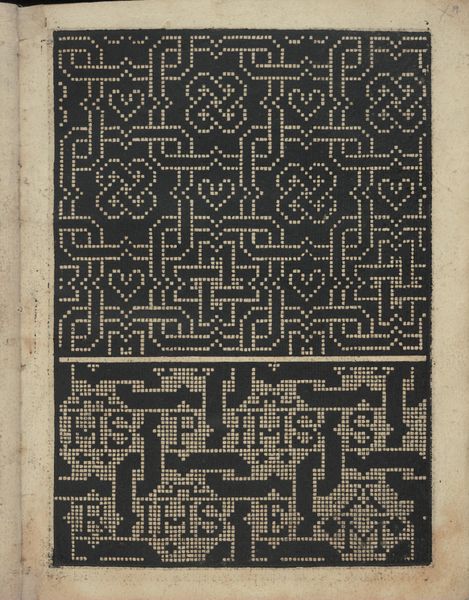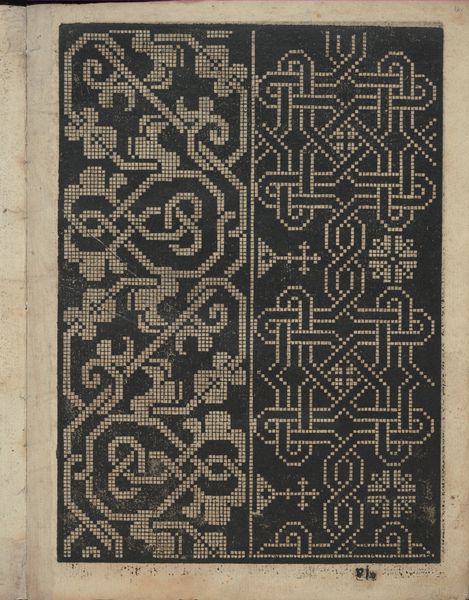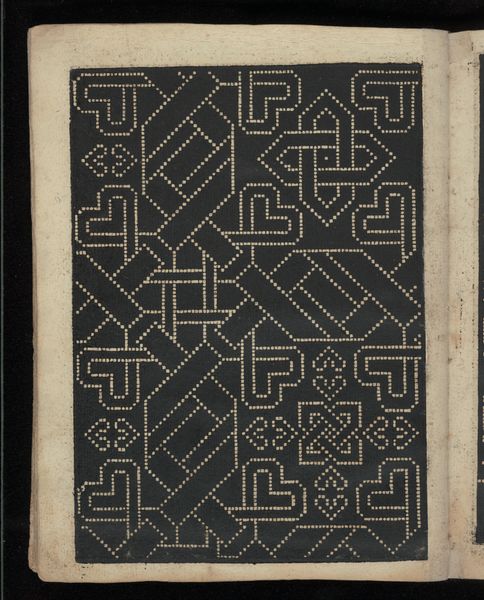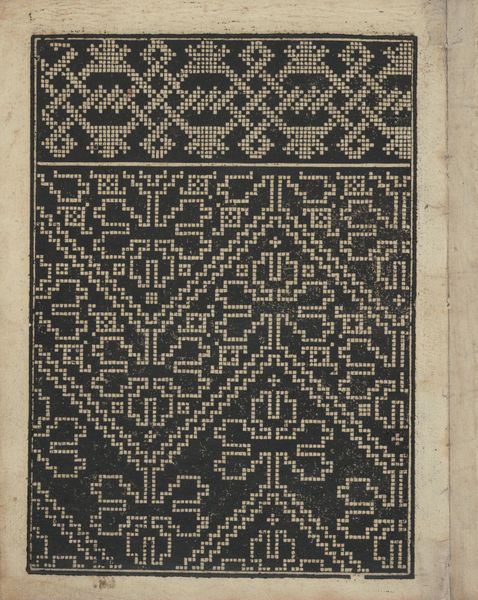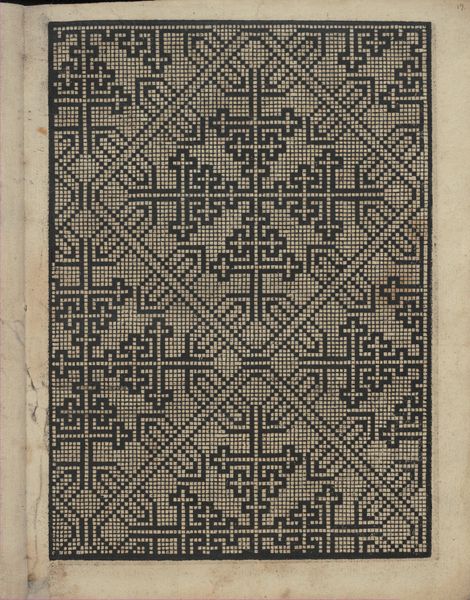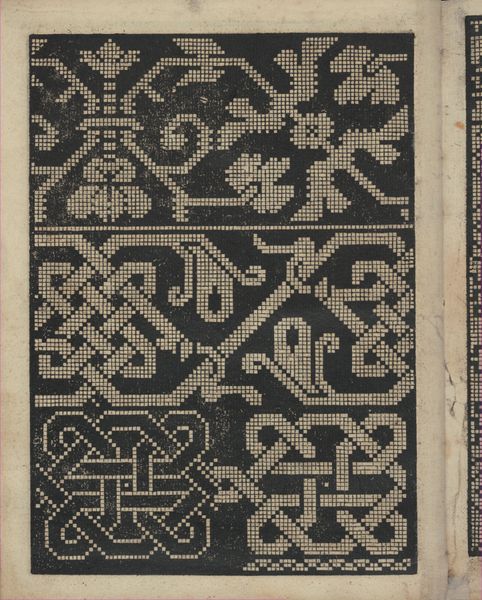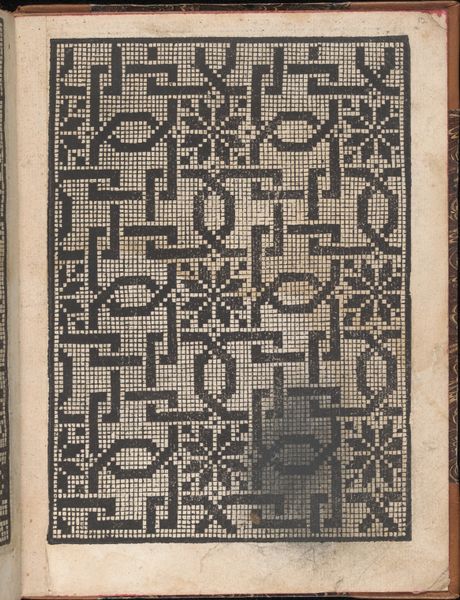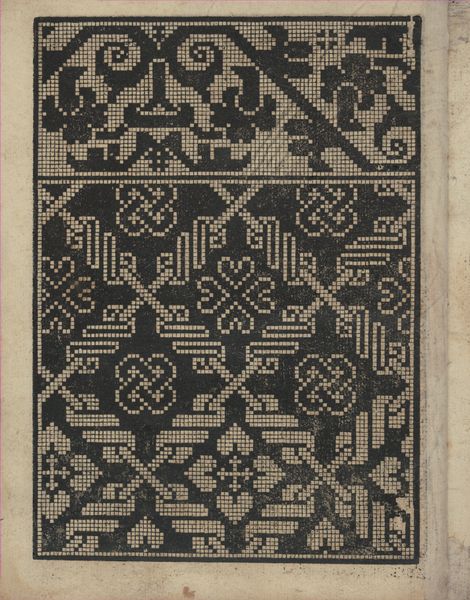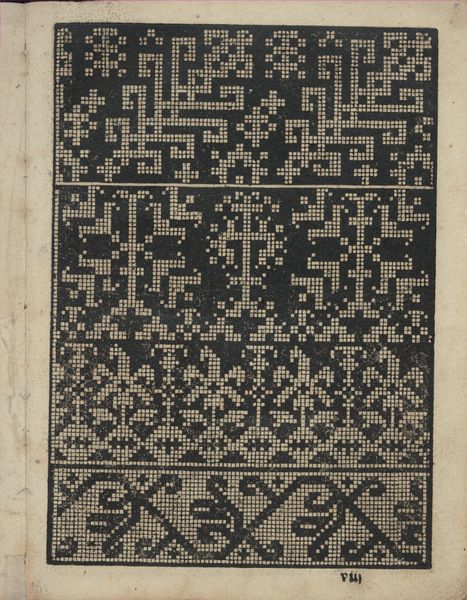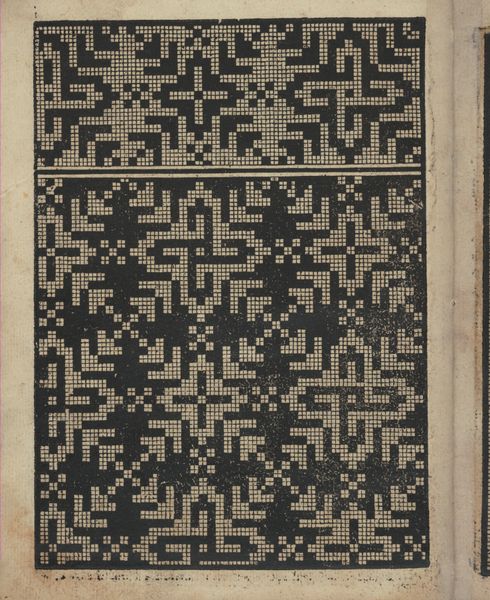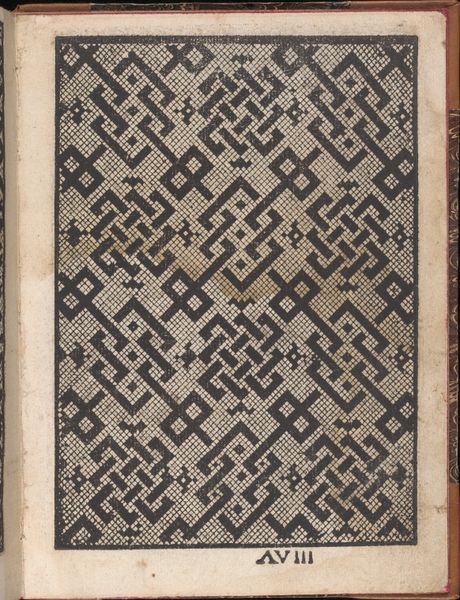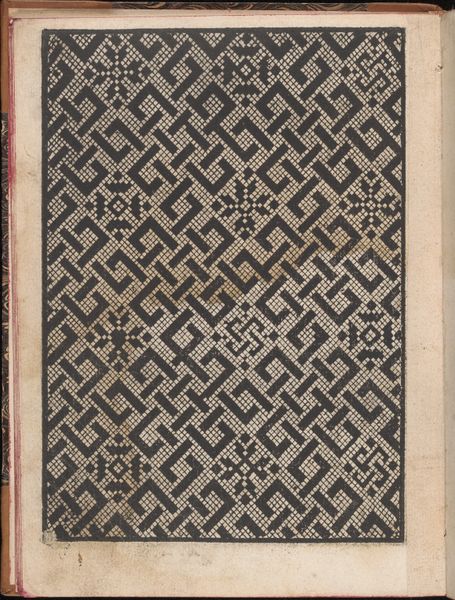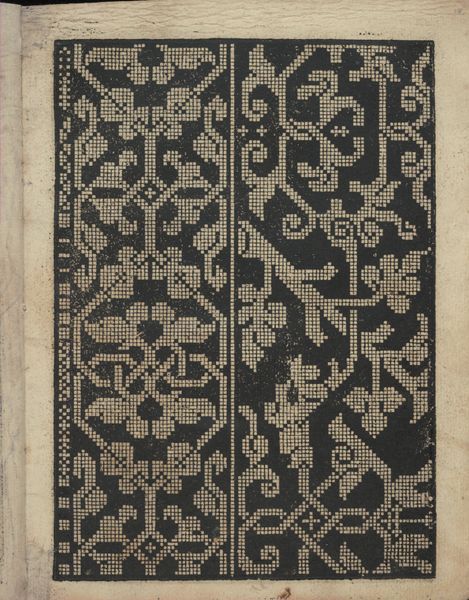
Libbretto nouellamete composto per maestro Domenico da Sera...lauorare di ogni sorte di punti, page 21 (verso) 1532
0:00
0:00
drawing, graphic-art, print, typography
#
drawing
#
graphic-art
# print
#
book
#
pattern
#
11_renaissance
#
typography
Dimensions: Overall: 8 1/16 x 6 5/16 in. (20.5 x 16 cm)
Copyright: Public Domain
Editor: This is page 21 from *Libbretto nouellamete composto per maestro Domenico da Sera...lauorare di ogni sorte di punti*, created by Domenico da Sera in 1532. It's a print from a book, showcasing typography and patterns. It's fascinating how it almost anticipates pixel art. How would you interpret the cultural significance of this image, especially considering its purpose as a pattern book? Curator: This work exists within a crucial moment in the history of visual communication. Printed pattern books, like this one, democratized access to design. Consider who benefits: the individual artisan, now empowered with wider possibilities; or workshops which become able to reproduce labor? Previously, such designs would have been closely guarded trade secrets within guilds or accessible only to the wealthy elite who commissioned bespoke textiles. What do you notice about the symbolism in the patterns? Editor: I see a lot of geometric shapes and some floral motifs, which feel quite common for the era. What else should I be looking for? Curator: Consider the act of replication itself as a form of cultural transmission. The very existence of this print suggests a rising merchant class eager for decorative innovation and, more importantly, increased social mobility. Are these patterns promoting any particular worldview or status? Or merely responding to changes in technology that alter existing social hierarchies? Editor: That makes a lot of sense. It's not just about the patterns themselves, but what the printing and distribution of them tells us about Renaissance society's changing relationship with art and labor. Curator: Exactly. It also raises questions about authorship and originality versus reproduction and dissemination. This isn't just an art object; it’s a cultural artifact deeply embedded in the economic and social fabric of its time. Editor: I never thought about a simple pattern book carrying such significant weight! Thanks! Curator: Indeed! Thinking of it as just "decorative" would miss much of the point, which illustrates art's essential link to its social context.
Comments
No comments
Be the first to comment and join the conversation on the ultimate creative platform.
